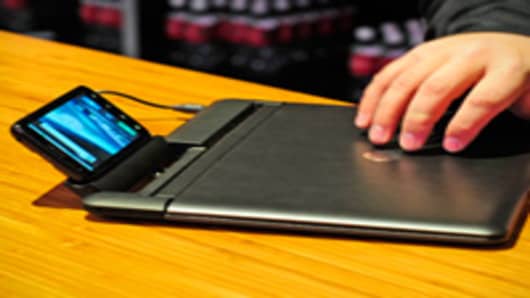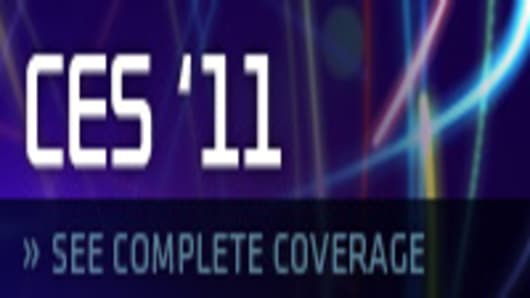“These companies are like 6-year-olds on a soccer team,” one company representative told me. “The ball goes over here, and they all run after it in a blob. ‘Tablet!’ ‘Tablet!’ ‘Tablet!’ ”
Most of the new tablets run Google’s Android mobile operating system — a new version that Google says is better suited for a tablet’s larger screen. There are exceptions, though. The great-looking, forthcoming BlackBerry Playbook runs its own special operating system, for example (bummer — no well-stocked app store). And Hewlett-Packard’s eagerly awaited tablets weren’t on display at the show, but the company makes no secret that they’ll run WebOS, an attractive chunk of software that Palm developed for its Palm Pre app phones. (H.P. bought Palm last year for $1.2 billion.)
The new tablets would take aim at the current iPad’s weak spots. The rivals have built-in cameras, for example, or offer a choice of screen sizes.
This battle should make for some fascinating spectating. One major reason Android phones have become so popular is that when you bought an iPhone, you had to sign up for AT&T. If you wanted Verizon , you probably went with Android. (That, of course, has all changed; starting next month, Verizon will offer the iPhone, too.)
But with a tablet, you don’t particularly need a cellular connection. Plenty of people lead long, happy lives having only Wi-Fi connections on their tablets. In other words, the iPad-versus-clones battle will boil down to quality, price and features — exactly as it should be.
The second theme of C.E.S. was, once again, Technologies We Desperately Wish You’d Want. For the 417th straight C.E.S., the industry trotted out yet another vision of the Connected Home (your appliances, home theater and other gadgets all on a big network). And for the 417th straight year, nobody in Americaland will have any interest.
This year, too, was the biggest push yet toward connecting your TV to the Internet. Not to download movies and TV shows; that’s a natural, popular feature. No, we’re talking about browsing the Web and doing e-mail on your TV screen — an idea that dies year after year, and will die again this time (sorry, Google and Yahoo ). Nobody wants to sit down at the TV and pick up a keyboard and mouse, except maybe a few people on the lunatech fringe.
The technology the industry most wants to push down our throats, though, is 3-D. For the second C.E.S. in a row, blurry, double-vision flat panels were hung on every available surface of the Las Vegas Convention Center — televisions that looked sharp only when you put on ridiculous-looking 3-D glasses. Many of those glasses are just as big, heavy and expensive as last year’s crop (at $100 a pair, exactly how many friends will earn a place at your Super Bowl party?).
Fortunately, an effort was clearly in progress to make the glasses less hideous — or even to eliminate them altogether. More companies than ever (Sony, Toshiba and others) had new, glasses-less 3-D TV sets on display. They’re pretty awful; you have to sit exactly dead-center, which means that only one person at a time can watch. Even then, the image isn’t sharp; in fact, it seems to be made up of little beads. But the engineers and marketers will no doubt keep at it. What else is there to do when they’re not designing iPad clones?
So far, Americans haven’t expressed any interest in 3-D — maybe because it requires buying a new TV, new Blu-ray player and all new movie discs. But Panasonic, Sony and others paraded 3-D still cameras and 3-D camcorders this year, in hopes of jump-starting the whole mess.
A third big message of C.E.S. this year was, “4G is coming soon.” Verizon and AT&T, in particular, must have spent the equivalent of Google’s Internet bill to plaster C.E.S. with ads. They’re promoting their coming cell network upgrades, which will give your cellphone faster Internet connections. But don’t count on coast-to-coast any time soon. The rollout will take years.




